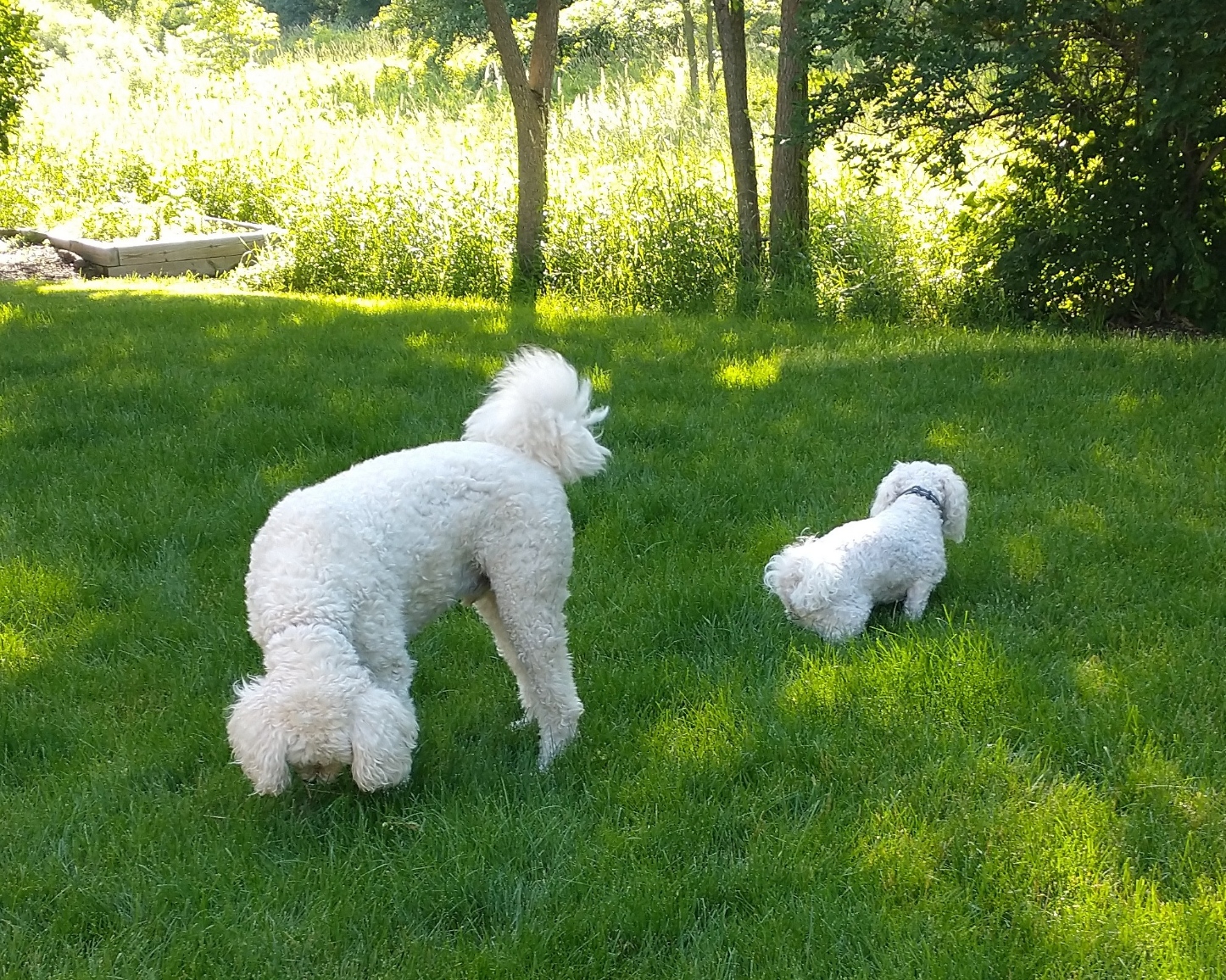Even before we adopted Katie, we had decided that we would invest in hiring a trainer once we acquired a dog, if only to reinforce basic commands. The question was, “Which trainer?”
Most pet stores offer some type of group dog training, which would be the most economical, but we quickly realized that Katie would not respond to that training: She was afraid of strangers as well as other dogs and would virtually freeze. Even if she got comfortable in the training situation, she did not respond to treats. She had never had treats as a breeder dog.
One of the people at our vet’s office recommended Sit Happens dog training company. Danny, a representative from the company, came to our house to explain the company’s philosophies, show off its successes, explain how the training worked, and observe Katie.
Danny said Katie’s disinterest in treats was not a problem; Sit Happens recommends using an electronic collar for training. The pulse does not hurt the dog, but the dog responds well (and quickly) to it. We agreed this type of training would be appropriate for Katie, and agreed to purchase the collar. We then debated if we should buy the three-lesson or five-lesson package. (The five-lesson package included lifetime reinforcement training, if needed.) Naturally, we expected Danny to recommend the more costly five-lesson package.
After observing Katie, though, he said, “I don’t think you’ll need the five-lesson package.” He was right; we barely needed the three lessons we bought, because Katie is a quick learner—and because I was committed to do the practicing required. After two lessons she was doing three basic commands: “Katie, come,” “Katie, sit,” and “Katie, place.” (This last one tells her to stay in her bed or her “place” in the living room.) She also quickly learned, “Katie, stay,” although she doesn’t always stay as long as I would like her to. We’re working on that, however.
One of the things our trainer Michele did not have to teach Katie was to stop barking at and jumping on strangers. Once in a while (not always) she will bark when someone comes to the door, but she hushes quickly at my command. And she does not jump on people. Although Michele did not have to teach Katie restraint with strangers, she did have to teach her something that most dogs do instinctively—to jump up onto furniture! Unlike any other dog I have ever known, Katie did not know how to jump on the couch or a chair. Michele showed us how to train her to “up.” After some reluctance, Katie learned and discovered it was fun to jump up!
During those first weeks of training, I diligently worked with Katie on her commands several times a day. As she was learning to obey, Katie decided that our training times were play times. Consequently, whenever she wants to play, she demands going through our training routine, especially the “Katie, up!” command. (Interestingly, she rarely jumps up on the couch or a chair on her own, only when we tell her to.) And when I decide play time needs to end, I command her to “Katie, place” and go to her spot in the living room, where she sits and gets quiet.
I no longer need the collar to make her obey. She can even be out in the front yard without a leash, when we are out there.
The training was expensive, but it was well worth its cost. Sit, does in fact, happen.
Until next time,
Your Reluctant ROVER,
Linda






